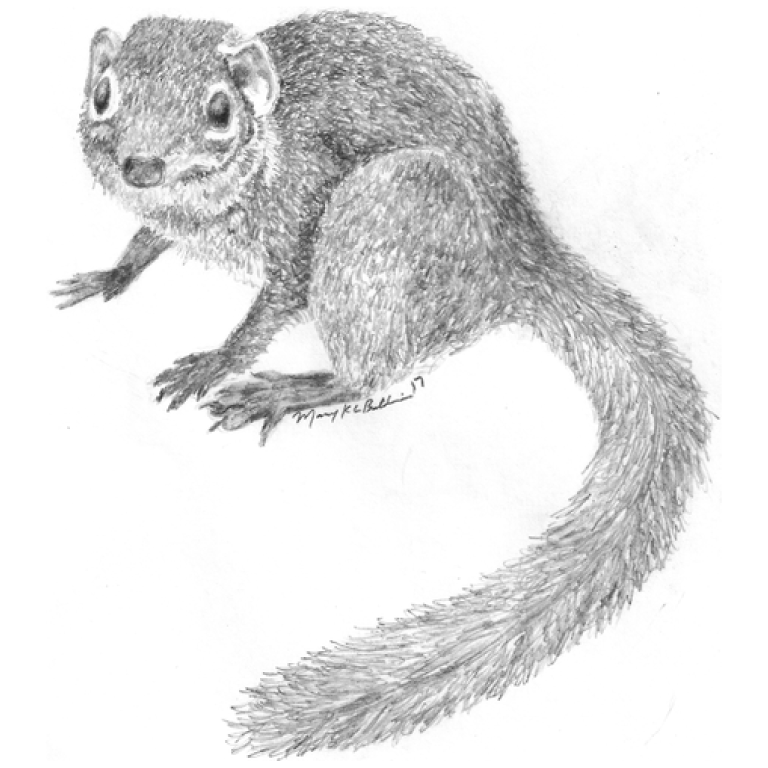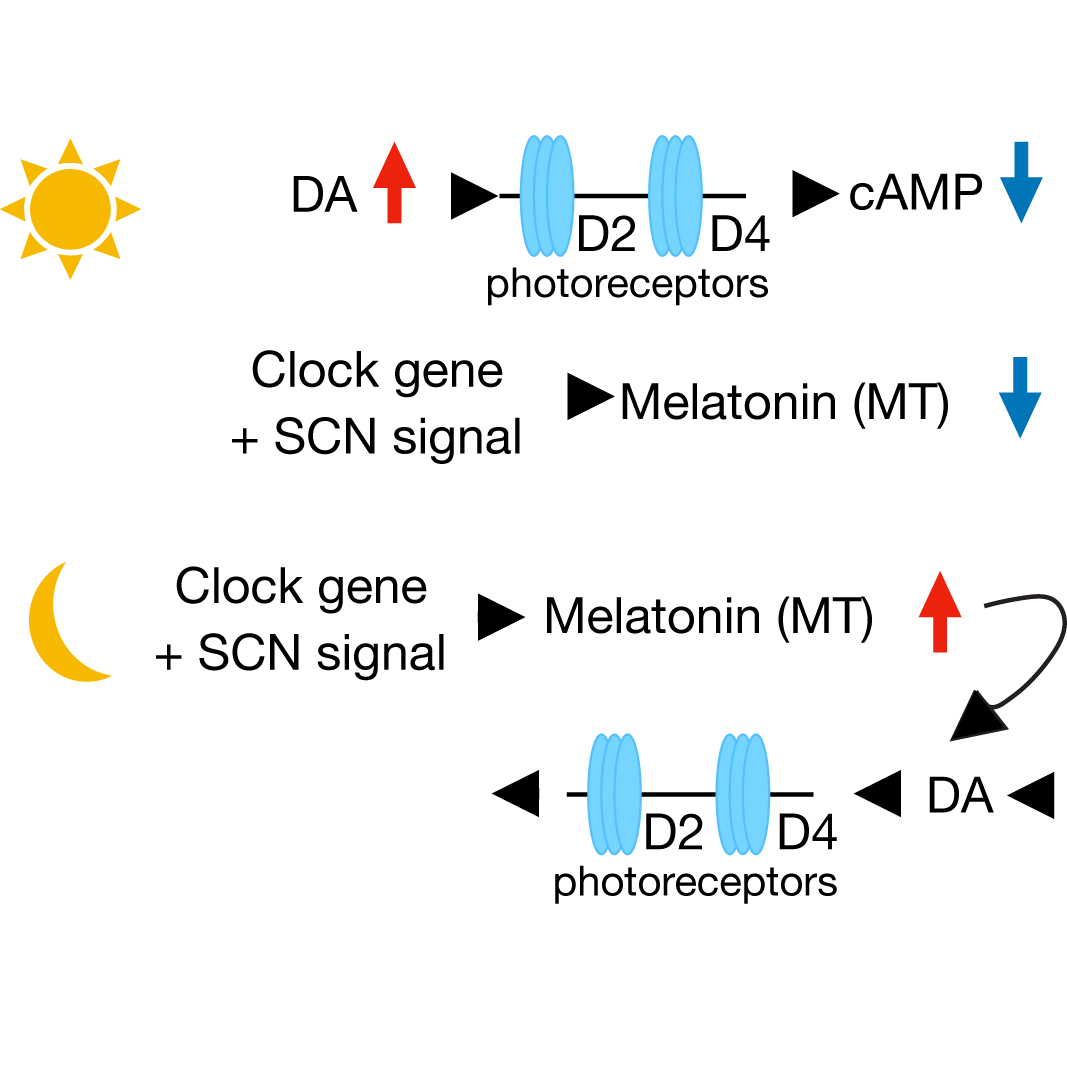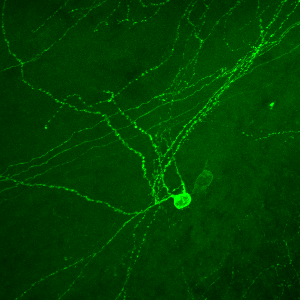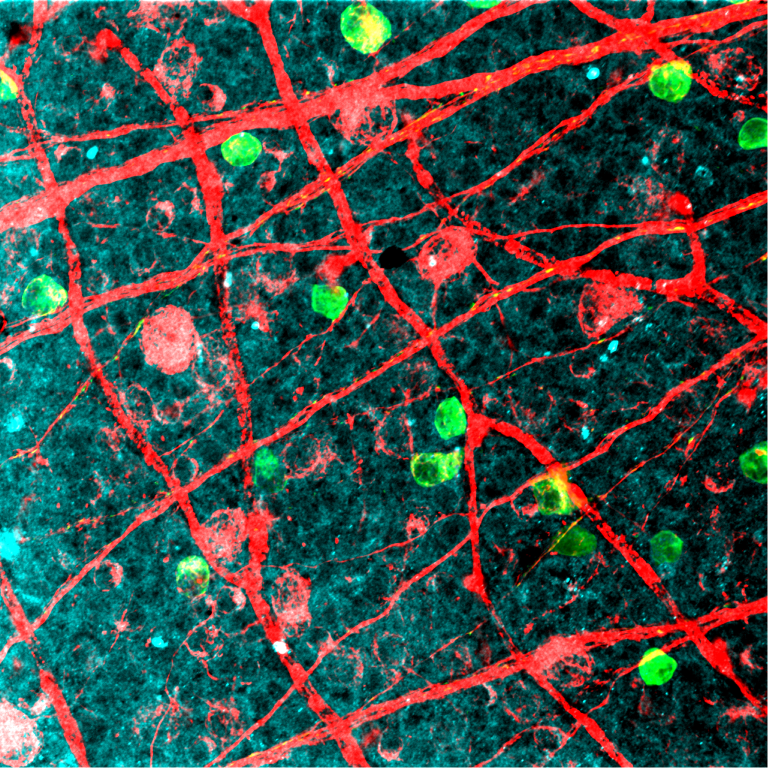Research

Retinal ganglion cell diversity in tree shrew
Tree shrew is a mammal with a highly developed visual system that has been used extensively for studying cortical visual processing and refractive errors such as myopia. It has a cone-rich retina, a foveal analog, and close genomic relationship with primates. It's two major retinorecipient targets - the superior colliculus and the lateral geniculate nucleus, have well-defined structures and are laminated, suggesting complex higher visual functions. We use viral techniques and electrophysiological measurements to distinguish the morphology and functions of different retinal ganglion cell types in the tree shrew retina and map retinal projections to subcortical targets that are involved in visually guided behaviors.
Dopamine: Retinal signaling and diseases
Dopamine is a key neuromodulator in the retina that regulates functions from light adaptation to circadian rhythm. It is also involved in diseases such as diabetic retinopathy that leads to progressive vision loss. We study the neuromodulatory role of dopamine in parallel processing and its potential neuroprotective functions against retinal diseases.


Viral-based mapping of retinocollicular pathways (collaborative)
Superior colliculus is a major retinorecipient hub involved in visual and visuomotor tasks such as movement detection, saccadic eye movements and attention. It is thought that superior colliculus receives visual input from multiple retinal ganglion cell types. In this collaborative work, we are optimizing viral delivery to retrogradely target retinal ganglion cells that form the retinotectal pathways in rodents and primates.
Sensing ocular stress in glaucoma
Glaucoma is a progressive optic neuropathy where damage to the optic nerve slowly results in the death of retinal ganglion cells, causing vision loss. Intraocular pressure is a primary risk factor in glaucoma and is known to alter retinal signaling in ways that are not fully understood. We are pursuing collaborations aimed at understanding signaling mechanisms that are altered in glaucoma and identifying targets for therapy.
